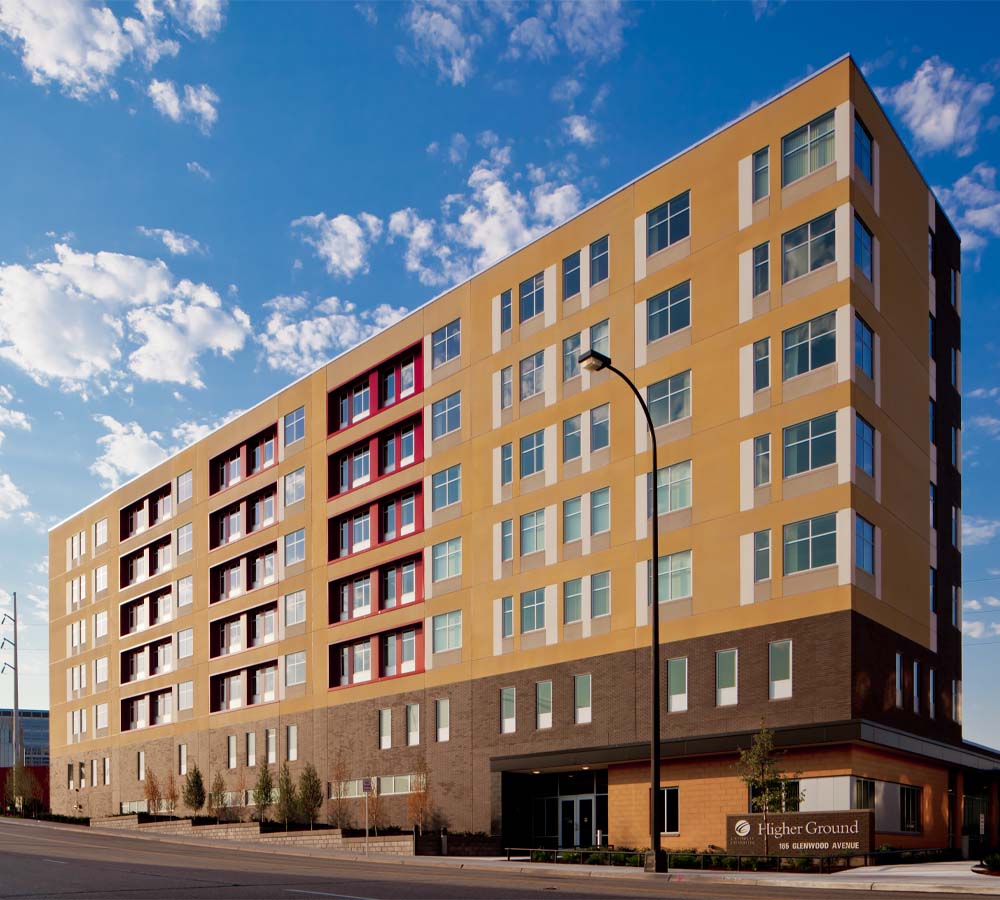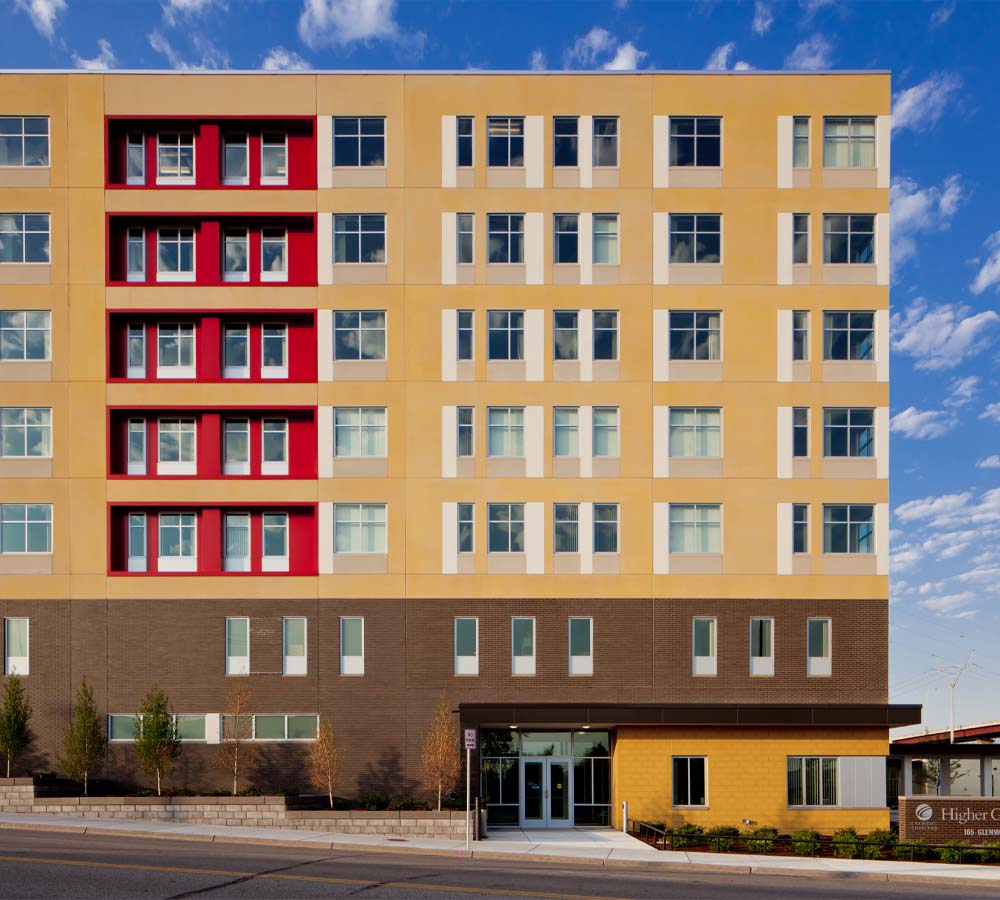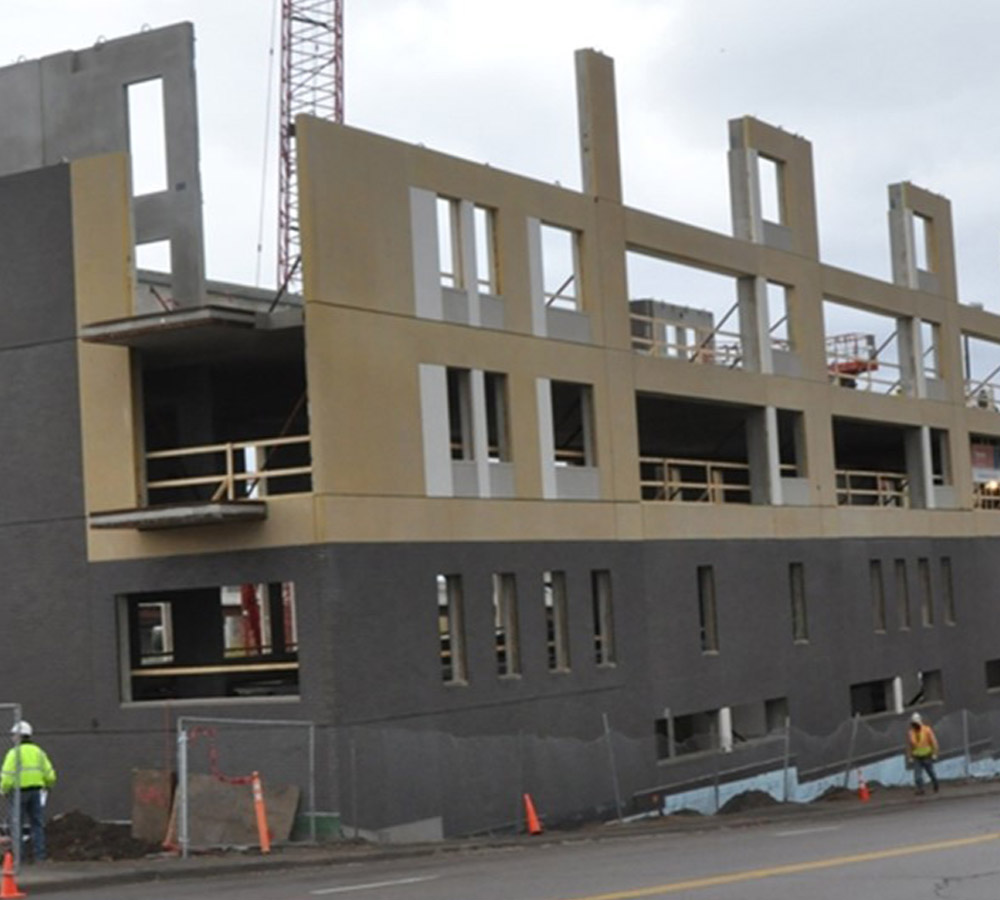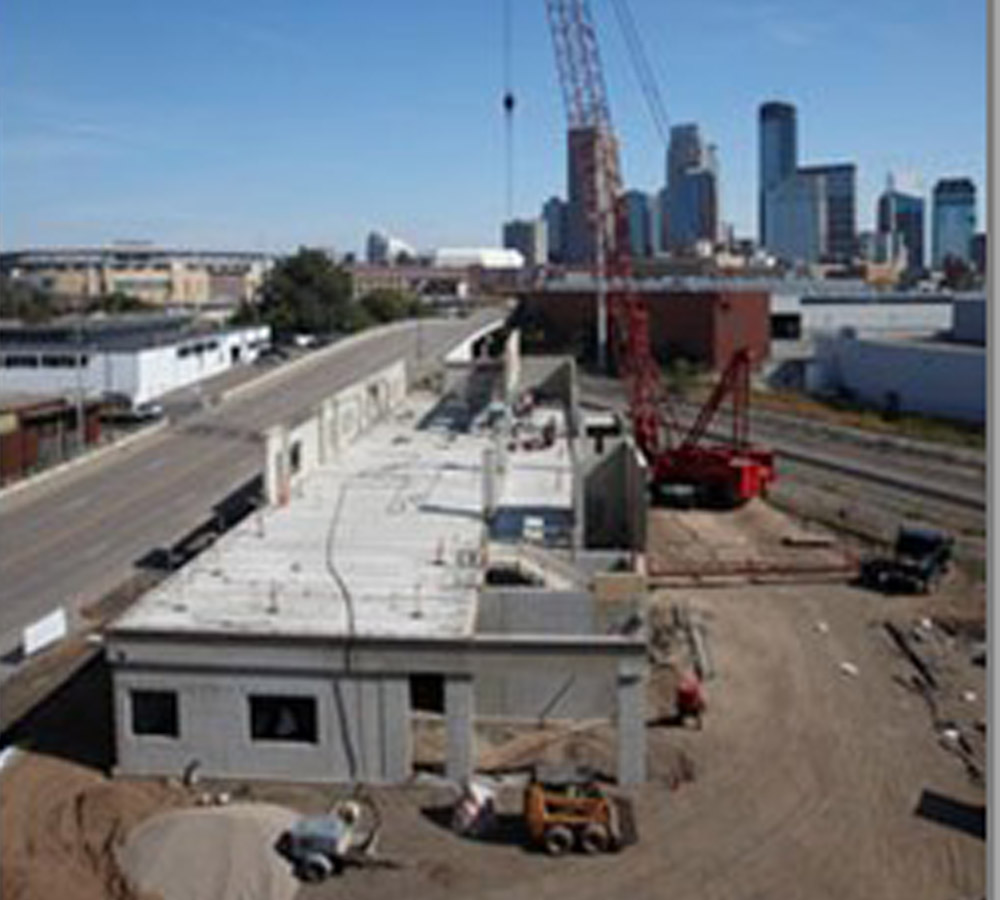Higher Ground
Minneapolis, MN
The Higher Ground homeless shelter in Minneapolis shows how precast concrete panels can provide architectural finish, meet load-bearing structural requirements, and even serve as a truss elements.
A total-precast building, components include insulated wall panels, prestressed hollow-core planks, and precast stairs. The wall panels are load-bearing, but also provide an exterior acid-etched, colored architectural finish. Precast panels surrounding the vertical section of windows have a white finish. Another vertical section features deep returns with windows surrounded by thin-brick covered precast panels and spandrels supported off he returns. Cantilevered bay windows are featured at the end of each floor. Hollowcore floors are covered with a sound mat and polished concrete topping.
The most interesting feature is a second floor roof area. Exterior of each upper floor consists of horizontal, architectural-finished precast panels. The panels covering the third floor also work as trusses panning 40 feet and resting on columns below. At their bottom, these panels support hollow-core planks to one side that form a second level roof deck and, to the interior, support the planks of the third floor. At the top of the panels, a bearing angle picks up the hollowcore planks forming the fourth floor level.
Cermak Rhoades Architects had not done a precast building before, “It was very exciting,” says Todd Rhoads, AIA, LEED AP “The exterior precast panels are not only structural, they are insulated. They also perform as architectural panels. And, the building wen up literally in just a few months. We did an analysis early in the process. With the given time schedule, we realized that we could save a couple of hundred thousand dollars if we went with precast over conventional building systems. Total precast, seven story homeless shelter. Originally designed to be a cast in place structure, precast proved to by more economical and had a fasted overall construction schedule.”
PROJECT DETAILS
PRECAST PRODUCTS
PRODUCTS
Architectural Wall Panels
Spandrels
Beams
Columns
Hollowcore
Stairs
FINISHES
Acid Etch
Sandblast
FEATURES
Thin Brick






